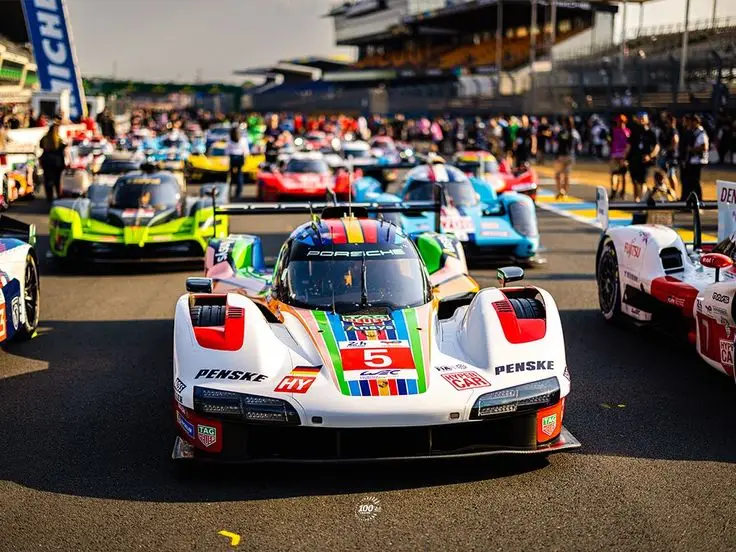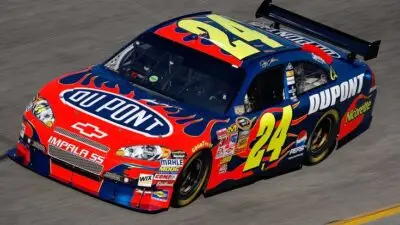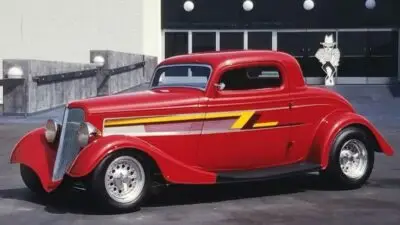The automotive world has been shaped by epic battles between industry titans who pushed each other to create faster, safer, and more innovative vehicles. These competitions did more than sell cars—they revolutionized technology, transformed engineering practices, and captivated fans worldwide. The greatest automotive rivalries have directly accelerated innovation, turning competitive pressure into technological breakthroughs that benefit everyday drivers.

When Ford challenged Ferrari at Le Mans in the 1960s, it wasn’t just about winning a race—it was about proving American engineering could defeat European craftsmanship on the world stage. Similarly, other legendary automotive rivalries like BMW versus Mercedes, Mustang versus Camaro, and now Tesla versus traditional automakers have continuously raised the bar for performance, safety features, and efficiency.
Behind these corporate battles are passionate humans—engineers, designers, and visionaries whose personal quests for excellence fueled decades of advancement. Their stories reveal how competition becomes the ultimate catalyst for progress, transforming bitter rivals into unwitting collaborators in advancing automotive technology.
Key Takeaways
- Automotive rivalries between major manufacturers have directly accelerated technological innovation, safety features, and performance improvements across the industry.
- The human stories behind corporate competitions reveal how personal determination and engineering passion transformed competitive pressure into revolutionary automotive breakthroughs.
- Historic battles like Ford versus Ferrari and ongoing rivalries continue to shape vehicle development, influencing everything from racing technology to the everyday cars we drive.
Foundations of Automotive Rivalry

The automotive industry’s competitive spirit emerged from the early days of car manufacturing, with brands vying for technological leadership and market dominance. These foundational rivalries sparked innovations that transformed simple horseless carriages into the sophisticated vehicles we know today.
Culture of Competition
Competition has been the driving force behind automotive innovation since the industry’s inception. Early manufacturers like Ford and General Motors established the blueprint for corporate rivalry that continues today. These competitions weren’t just about selling cars—they fundamentally shaped how vehicles were designed, built, and marketed.
When German luxury brands Mercedes-Benz and BMW intensified their rivalry in the mid-20th century, it created a new standard for engineering excellence. This competition in the automotive industry pushed both companies to develop better safety systems, more efficient engines, and superior driving dynamics.
The Boeing-Airbus dynamic in aviation provides a parallel example of how intense competition drives innovation across industries. In cars, these rivalries often resulted in technological leaps that benefited consumers and advanced the entire field.
Motorsport as Innovation Catalyst
Racing has served as the ultimate proving ground for automotive technology since the first organized competitions. Early automotive rivalries born on racetracks—like Ferrari versus Maserati in the 1950s—pushed engineers to find creative solutions to problems of speed, reliability, and safety.
Formula 1 became particularly influential, with innovations like:
- Disc brakes
- Aerodynamic designs
- Turbocharging technology
- Carbon fiber construction
The intense pressure of motorsport competition created a crucible for rapid development. Technologies tested on Sunday’s race often appeared in production cars within years, accelerating the pace of consumer automotive progress.
Even today, racing serves as a laboratory for future technologies. The rivalry between electric racing teams has accelerated the development of battery technology and power management systems that directly benefit consumer electric vehicles.
Iconic Cars and Their Competitions

The automotive world has been shaped by legendary rivalries that pushed manufacturers to develop faster, more innovative vehicles. These competitions created some of the most recognizable cars in history and transformed entire segments of the industry.
Ford Mustang vs. Chevrolet Camaro: The Eternal Battle
The rivalry between the Ford Mustang and Chevrolet Camaro stands as one of the most enduring in automotive history. When Ford introduced the Mustang in 1964, it created the pony car segment and took the market by storm.

General Motors responded with the Camaro in 1967, beginning a competition that has lasted for decades. Both vehicles evolved from simple, affordable sports cars to high-performance machines with versions exceeding 650 horsepower.

The rivalry intensified in the 1990s and 2000s as both manufacturers revitalized their designs. Modern iterations feature advanced technology while maintaining their distinctive heritage styling cues.
Sales figures have swung back and forth, with each model claiming temporary dominance. This competition drove innovation in affordable performance, benefiting consumers with increasingly capable vehicles at accessible price points.
Supercar Showdowns: Porsche 911 Competitions
The Porsche 911 has faced numerous challengers throughout its nearly 60-year history, establishing itself as the benchmark against which other sports cars are measured. Its distinctive rear-engine layout and iconic silhouette remain instantly recognizable.
The 911’s primary rivals have shifted over decades. In the 1970s and 1980s, Ferrari’s mid-engine models challenged Porsche’s engineering approach. Later, the Nissan GT-R emerged as the “911 killer” with comparable performance at a lower price point.


Perhaps the most fascinating competition came from within, as Porsche continuously improved the 911 to compete against its own creations like the mid-engine Cayman. This internal rivalry pushed engineers to extract remarkable performance from the 911’s theoretically compromised layout.
The 911’s success against these competitors demonstrates the power of continuous development and refinement. Each new generation addresses criticisms while preserving the essential character that makes it a Porsche.
Audi Quattro: Revolutionizing the Rally World
The Audi Quattro transformed rally racing when it debuted in 1980, introducing all-wheel drive technology that rendered competitors instantly obsolete. Before the Quattro, conventional wisdom held that AWD systems were too heavy and complex for competitive racing.

Audi proved this wrong as the Quattro dominated the World Rally Championship, winning consecutive manufacturer titles from 1982-1984. This forced competitors like Lancia, Peugeot, and Ford to develop their own AWD systems.
The technology quickly trickled down to production cars, with Audi leading the charge in bringing all-wheel drive to luxury performance vehicles. Today, virtually every premium manufacturer offers AWD models inspired by Quattro’s success.
The Quattro’s influence extends beyond rallying. Its technological innovations changed consumer expectations about all-season performance and handling, creating an entirely new segment of high-performance AWD vehicles.
Engineering Milestones Fueled by Rivalry

When automakers compete fiercely, technological breakthroughs often follow. These engineering battles have transformed ordinary vehicles into extraordinary machines and pushed the boundaries of what’s possible in automotive design.
The Birth of the Supercar Era
The legendary Ford vs Ferrari rivalry of the 1960s sparked the modern supercar revolution. After Ferrari rejected Ford’s acquisition offer, Henry Ford II launched a mission to defeat Ferrari at Le Mans, resulting in the iconic Ford GT40.

The GT40 featured revolutionary aerodynamics, a lightweight chassis, and a powerful V8 engine that delivered unprecedented performance. Its development introduced computer simulations and wind tunnel testing to automotive engineering.
This rivalry triggered a wave of innovation across the industry. Lamborghini, originally a tractor manufacturer, entered the supercar market after Ferruccio Lamborghini’s dispute with Enzo Ferrari about clutch problems in his personal Ferrari.
The competition pushed manufacturers to experiment with mid-engine layouts, exotic materials, and higher-performance powertrains that would later influence mainstream vehicles.
Technical Progress in Endurance Racing
Endurance races like Le Mans have served as proving grounds where automotive engineering innovations are tested under extreme conditions. The pressure to outperform rivals has accelerated advancements in:
- Aerodynamics: From rudimentary spoilers to active aero systems
- Lightweight materials: Carbon fiber adoption that reduced weight while maintaining strength
- Engine efficiency: Turbocharging technology that maximized power from smaller engines
- Braking systems: Carbon-ceramic brakes that withstand extreme temperatures
The Audi vs Peugeot diesel wars of the 2000s revolutionized engine technology, proving diesel engines could deliver power, efficiency, and reliability simultaneously.
Similarly, hybrid powertrains debuted in endurance racing before reaching production cars. Toyota and Porsche’s hybrid prototypes developed energy recovery systems that later influenced road car technology.
The Human Stories Behind the Machines

Behind every legendary car and historic race lies the human element that truly brings automotive rivalries to life. These personal stories and dramatic showdowns often defined racing history as much as the mechanical innovations they inspired.
Personalities and Passions
The automotive world has always been shaped by larger-than-life personalities. Engineers and drivers poured their hearts into machines that would define eras of competition. Their passion transformed metal and rubber into legends.
Famous collectors like Jay Leno represent the enduring human connection to these mechanical marvels. Leno’s renowned collection preserves not just the vehicles but the stories of their creators.
Racing drivers risked everything on the track. Their courage and determination created moments that transcended sport. Many developed deep emotional connections with their vehicles, understanding every quirk and capability.
Team owners and chief engineers often engaged in personal battles that went beyond business rivalry. Their vision and stubbornness pushed technology forward, creating innovations that eventually benefited everyday drivers.
Dramatic Narratives: Ford vs. Ferrari
The Ford vs. Ferrari rivalry stands as perhaps the most compelling human story in racing history. When Henry Ford II’s attempt to purchase Ferrari was rejected, it became personal. Ford committed massive resources to defeat Ferrari at Le Mans.
Carroll Shelby and Ken Miles formed the human core of Ford’s effort. Their expertise, friendship, and occasional conflicts created the perfect team to challenge Ferrari’s dominance in endurance racing.
The 1966 Le Mans 24-hour endurance race became the dramatic culmination of this rivalry. Miles drove brilliantly but lost the individual win due to Ford’s desire for a photo finish with three cars crossing together.
This rivalry wasn’t just about mechanical superiority but about pride, vengeance, and the pursuit of greatness. The human drama behind these machines elevated automotive competition into cultural legend, inspiring books and films decades later.
Rivalries’ Influence on Modern Automotive Enthusiasts

Automotive rivalries have deeply shaped how enthusiasts interact with car culture today. These historic competitions continue to fuel passion and loyalty among fans while influencing collecting habits and community gatherings across the globe.
Collectors and Restorations
Car collecting priorities often reflect the great automotive rivalries of history. Many enthusiasts dedicate themselves exclusively to either Ford or Chevrolet, with the Mustang versus Camaro battle being particularly influential in restoration communities.
Restoration projects frequently aim to recreate specific models from rivalry-defining eras, such as the 1960s muscle car period. Collectors pay premium prices for authentic parts from these competitive periods.
Auction values clearly demonstrate rivalry impact – when a rare Mustang Boss 302 sells for a record price, Camaro Z/28 values often surge in response. This competitive collecting extends to memorabilia, with vintage advertisement materials featuring rival claims becoming highly sought after.


Car shows commonly organize displays highlighting these rivalries, allowing visitors to compare restored examples side-by-side much as consumers would have decades ago.
Community and Car Culture Evolution
Automotive communities frequently organize around rivalry-based identities. Ford Mustang and Chevy Camaro clubs represent two of the largest enthusiast groups nationwide, with members proudly displaying loyalty through apparel, accessories, and social media profiles.
Online forums dedicated to specific rivalries have created virtual communities where enthusiasts debate performance statistics and design superiority. These digital spaces keep historic competitions alive while introducing younger fans to automotive history.
Annual events like “Ford vs. Chevy Showdown” attract thousands of attendees celebrating these rivalries that shaped American automotive culture. Racing events frequently feature rivalry-themed exhibition races recreating famous competitions.
Social media has amplified these traditional rivalries, with hashtag campaigns and viral videos highlighting performance comparisons between modern versions of classic rivalry models. Young enthusiasts now connect with automotive history through these ongoing competitive narratives.
The Enduring Legacy of Rivalries in Motorsport

Motorsport rivalries have transcended mere competition to become powerful engines of technological advancement and cultural significance in automotive history. These legendary contests have repeatedly pushed teams to break barriers in performance, safety, and efficiency.
Le Mans: More Than Just a Race
The 24 Hours of Le Mans stands as the ultimate testing ground where rivalries have shaped motorsport history. The iconic Ford vs. Ferrari battle of the 1960s remains one of racing’s most compelling stories, when Henry Ford II‘s determination to defeat Enzo Ferrari led to the development of the GT40.
This historic rivalry didn’t just create dramatic racing moments. It fundamentally changed automotive design approaches and accelerated technology development.
Le Mans continues to host important rivalries today. The competition between Audi, Toyota, and Porsche in the hybrid era has advanced electric propulsion systems now appearing in consumer vehicles.
The race’s extreme duration forces manufacturers to balance speed with reliability, creating innovations that eventually reach production cars.
Innovation Driven by Competition
Motorsport rivalries consistently generate technological breakthroughs. Healthy competition drives innovation by pushing engineers and teams to find advantages through creative solutions.
Key innovations born from racing rivalries include:
- Aerodynamics: The ground-effect technology battle between Lotus and Ferrari
- Materials science: Carbon fiber development accelerated by McLaren-Ferrari rivalry
- Engine efficiency: Turbocharging refined through Renault’s competition with naturally-aspirated engines
- Safety systems: Crash structures and driver protection enhanced through regulatory responses to on-track incidents
Ferrari’s presence in motorsport has been particularly significant. Their competition with other manufacturers has repeatedly driven innovation, with technologies later appearing in their road cars and eventually throughout the industry.
Frequently Asked Questions

Automotive rivalries have shaped the industry through technological breakthroughs, design innovations, and engineering excellence. These competitions between manufacturers have directly led to features we now take for granted in modern vehicles.
What notable innovations emerged from historical automotive brand competitions?
The Ford vs. Ferrari rivalry sparked significant advancements in racing technology and performance engineering. When Ford aimed to defeat Ferrari at Le Mans, they developed the GT40 with improved aerodynamics and engine reliability.
This competition led to better fuel injection systems and lighter materials that eventually made their way into consumer vehicles. The rivalry pushed both companies to create more durable engines that could withstand extreme racing conditions.
Brake technology also improved dramatically, with disc brakes becoming more widespread after proving essential in endurance racing. These innovations later benefited everyday drivers through safer, more reliable vehicles.
Which car model rivalries have most significantly influenced automotive design?
The ongoing battle between BMW and Mercedes-Benz represents one of the oldest rivalries in automotive history. Their competition has directly influenced luxury vehicle design language and interior appointments that other manufacturers emulate.
The Mustang vs. Camaro rivalry redefined American muscle cars and established design elements that remain iconic today. Their competition created the pony car segment and pushed both manufacturers to create more visually striking vehicles.
The Ferrari vs. Lamborghini rivalry transformed supercar aesthetics, with Lamborghini’s aggressive styling challenging Ferrari’s more classical approach. This competition established distinct design philosophies that continue to influence high-performance vehicles.
In terms of technology advancement, which car manufacturer rivalries have been most impactful?
The Tesla vs. traditional automakers rivalry has accelerated electric vehicle development and battery technology. This competition forced established manufacturers to invest heavily in EV technology much sooner than they might have otherwise.
The Japanese manufacturers’ rivalry with German luxury brands led to significant advancements in reliability engineering and manufacturing processes. Lexus challenged Mercedes-Benz and BMW with superior quality control and innovative production methods.
Formula 1 team rivalries between Mercedes and Red Bull have produced remarkable engine efficiency improvements and aerodynamic innovations. These technologies gradually transfer to consumer vehicles, improving fuel economy and performance.
How have national rivalries historically shaped the automotive industry landscape?
German vs. Japanese manufacturing philosophies created two distinct approaches to quality and production. German brands focused on engineering excellence while Japanese manufacturers pioneered lean production and reliability.
American vs. European design sensibilities established different automotive priorities that still exist today. American manufacturers historically emphasized size and power, while European makers focused on handling and efficiency.
Italian vs. British sports car traditions developed contrasting approaches to performance vehicles. Italian manufacturers like Ferrari prioritized passion and flair, while British makers like Aston Martin emphasized refinement and understatement.
What are some of the most intense rivalries between car brands that advanced engineering?
The Porsche vs. Ferrari competition elevated sports car engineering through constant innovation in handling, aerodynamics, and lightweight construction. Both pushed each other to create increasingly capable vehicles.
Audi vs. BMW has resulted in significant advancements in all-wheel drive systems and lightweight materials. Their competition in the luxury segment has generated improvements in manufacturing techniques and engineering solutions.
Toyota vs. Honda rivalry advanced hybrid technology and fuel efficiency. Both Japanese manufacturers raced to develop more efficient powertrains, resulting in breakthrough technologies like Toyota’s Hybrid Synergy Drive.
Can examples of non-sports legendary rivalries be seen as catalysts for automotive progress?
The luxury sedan rivalry between the Mercedes S-Class and BMW 7 Series has consistently introduced new safety technologies and comfort features. These innovations typically appear first in flagship models before filtering down to mainstream vehicles.
The pickup truck competition between Ford, Chevrolet, and Ram has driven advancements in towing capacity, durability, and utility features. Their ongoing battle has resulted in stronger frames, more efficient engines, and innovative cargo solutions.
The global competition between domestic and overseas brands has forced manufacturers to improve quality and value. This worldwide rivalry has benefited consumers through better vehicles at more competitive prices regardless of origin.



